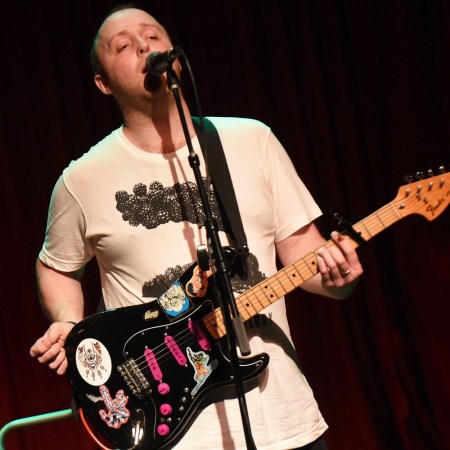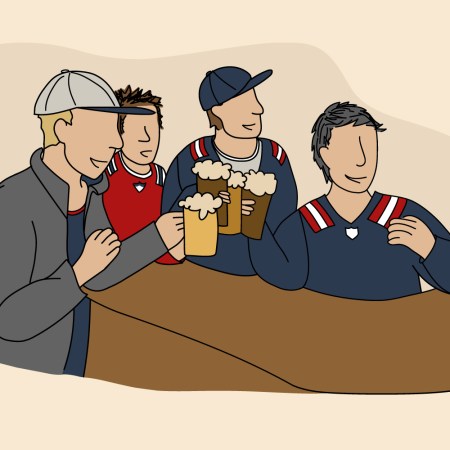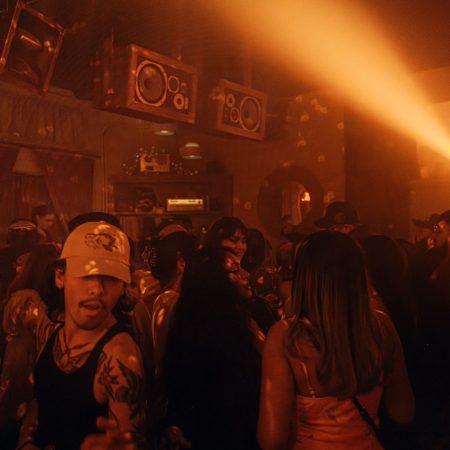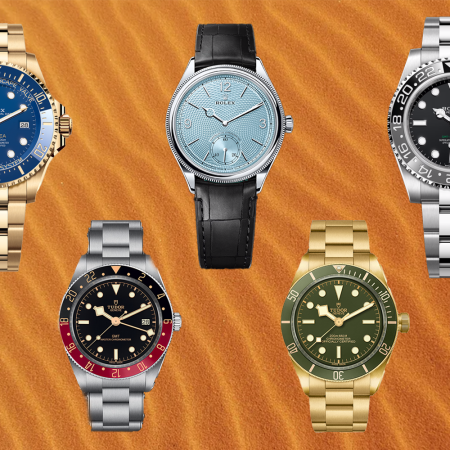Welcome to Karaoke Week, InsideHook’s weeklong deep dive into our favorite barroom activity (after bourbon shooters).
“Hold on to that fe-ah-eh-leeeeing….”
Just as Steve Perry beseeched us 35 years ago, it’s impossible to let go of “Don’t Stop Believin’.”
Something called the United States Karaoke Alliance listed “Don’t Stop Believin’” as the #4 karaoke song of all-time, but that was 2012 and I fail to believe a Carrie Underwood song or a limp Kid Rock country duet with Sheryl Crow (which, side note, can’t even touch the majesty of Kenny and Dolly’s “Islands in the Stream”) can “hold on” to our collective imagination.
So what makes the song stand out, three-plus decades later? Why do thousands of people each year unironically rally around a structurally odd, lyrically obtuse rock anthem from America’s least hip chart-topper ever?
A bit of background: in 1981, Journey was a moderately successful arena rock band that had only hinted at its future fortune (and sound). The band was started eight years earlier by ex-Santana guitarist Neal Schon, who originally fashioned the San Francisco group as a sort of proggy, faceless, decidedly non-pop entity. At least, that’s what a listen to the band’s early albums would tell you.
Then Steve Perry was hired by Journey in 1977 at the behest of the band’s manager. The singer’s soulful tone and sheer vocal strength redefined the group, who suddenly learned the meaning of “hooks” and “melody.” Later, keyboardist Jonathan Cain, formerly of the moderately popular pop group The Babys, came on board, adding a slick keyboard sheen to the band’s hard rock base.
Cain’s first record with the group was Escape, released in late July of 1981. Interestingly enough, “Don’t Stop Believin’” was the album’s second single, and only the third most popular song from the record upon initial release (it peaked at #9 on Billboard Hot 100).
The tune was written collectively by Perry, Cain and Schon, a creative trio who each brought their own strengths to the track. Cain kicks things off with an unforgettable piano intro; Schon comes in with that seriously badass guitar riff and never lets go; and then Perry joins, delivering us a story about … well, two very confused people. One: a small town girl (“living in a lonely world”). The other: a city boy “born and raised in South Detroit.”
As a former Michigan native, I can tell you: South Detroit is basically Windsor, Canada. It’s a lovely town, not prone to misfit souls booking nebulous late-night sojourns on Amtrak (“the midnight train going anywhere”).
In an interview Perry did with New York magazine, the singer explained some of the song’s images … like the oh-so-mysterious “streetlight people.” Essentially, the lyrics were born of Perry’s insomnia during a five-night run in Detroit.
“I was digging the idea of how the lights were facing down, so that you couldn’t see anything,” he said. “All of a sudden I’d see people walking out of the dark, and into the light. And the term ‘streetlight people’ came to me. So Detroit was very much in my consciousness when we started writing.” (He also notes that “South Detroit” was artistic license.)
In the band’s Time3 compilation, the band goes further, explaining the musical origins of the song: “At the band’s Oakland warehouse, this song bubbled out of a rehearsal. Schon developed the bass riff, the chugging guitar line and the sweeping chords on the chorus. [Drummer] Steve Smith built the song around a pattern featuring a lot of tom-toms, anchoring the number to a rich drum figure. Perry and Cain drew from their experiences with the Sunset Strip street scene for the lyrics (said “streetlight people”).
In the end, it’s a rousing track about our universal struggle. Or, “a perfect rock song,” as Allmusic called it. But why the song’s long-term appeal? Why does the song remain the staple of every sports stadium and karaoke hut? How have disparate cultural markers like The Sopranos, Glee, Family Guy, The Wedding Singer and Charlize Theron’s Monster successfully trotted out the song over the years?
As the rather extensive Wikipedia entry on the song notes, you don’t actually get to the actual “chorus” of the song until less than a minute left. The song builds intensity and offers a delayed payoff. The song almost begs people to join in during its, ahem, journey. And any song that has the whole house howling along with you by the end equals a great karaoke song.
For further evidence, we suggest looking at a video from long-time karaoke host Baby Van Beezly, who says she once hated the “most oversung song in karaoke history” … until she started filming every person who covered the song.
What she saw: Thousands of people working hard to get their fill. Because everybody wants a thrill. And everybody — and I mean everybody — knows the f***ing lyrics to this song.
And so its status as a great singalong goes on and on and on and …
This article was featured in the InsideHook newsletter. Sign up now.























